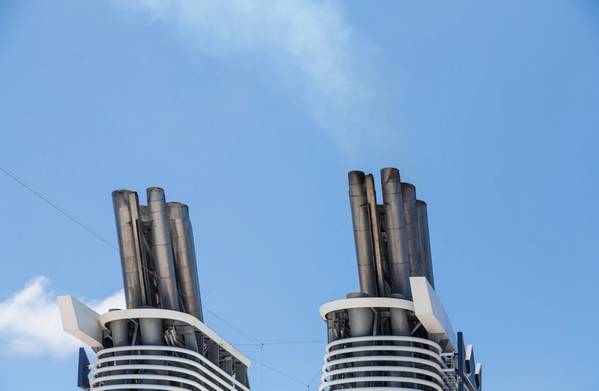
Shipping emissions: International measures needed to cut operational greenhouse gas emissions of existing fleet by 2030 – new study
The international shipping sector needs to quickly adopt short-term policy measures to cut operational greenhouse gas (GHG) emissions of the existing fleet, according to a new study. The study concludes that only a subset of potential policy options, namely those that mandate changes in how the existing fleet is operated can achieve the significant effect required to meet the sector’s emission reduction objectives. Examples of these policies are speed limits or mandatory limits on operational efficiency or shaft power –
The study out today led by CE Delft and UMAS, funded by the European Commission, analyzes potential short-term measures listed in the International Maritime Organization’s (IMO) initial strategy on the reduction of GHG emissions from ships.
The strategy, adopted in April 2018, includes commitments to peak emissions as soon as possible, to improve the carbon intensity of international shipping by at least 40% by 2030 (compared to 2008), and to reduce the total annual emissions by at least 50% by 2050 (compared to 2008).
The specific policy measures that can turn those commitments into practice are being considered by the IMO and will be discussed as part of the IMO negotiations starting next week. The measures considered in the study are those that could enter into force imminently and help to control GHG emissions over the period between now and 2030.
As requested by the IMO Marine Environment Protection Committee in October last year (MEPC 73), several countries have submitted concrete proposals for reduction measures. These include proposals for speed limits, for the improvement of ship’s operational efficiency as well as a proposal for a shaft power limit. According to the study such proposals can be compatible with the IMO’s objectives, if they are set at a sufficiently strict level.
The study also considered options for non-mandatory limits that use existing policy (Ship Energy Efficiency Management Plan, SEEMP) to incentivise greater efficiency. Such non-mandatory limits were deemed ineffective, as they would reduce GHG emissions by not more than 2% from the expected business-as-usual levels.
The IMO meeting in May will also discuss options to further strengthen the current internationally agreed energy efficiency rules under the Energy Efficiency Design Index (EEDI) regulation. The study analysed the emissions reduction impacts of further increasing the stringency of this regulation. The study found that these changes would not bring about any significant GHG reductions by 2030. However, they would achieve more impact further into the future.



